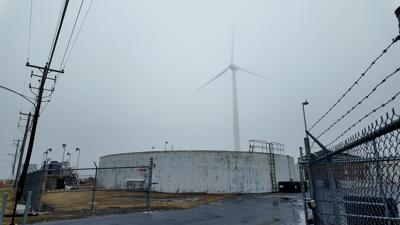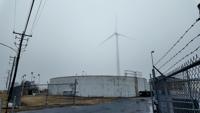CRISFIELD, MD — The rotor blades of Crisfield's 213-foot-tall wind turbine were spinning once again Thursday after months of stagnation.
The $4.1 million turbine was constructed as a step toward green energy to offset Crisfield's electricity costs.
"The turbine is primarily to help power and supplement electricity needs at the wastewater plant," Crisfield consulting engineer Jason Loar, a principal at Davis, Bowen & Friedel, Inc., said.
City officials say maintenance teams have struggled to identify the problem that kept the turbine inoperative.
"The city's had some issues with the current maintenance contractor getting it up and running," Loar said. "Se went out to a third party who has done some investigation."
Loar presented the findings of the outsourced contractor, PowerGrid Partners, during the Crisfield City Council meeting Wednesday night. They discovered that the primary problem laid with the hydraulic oil system.
“It actually produced 11 kWs earlier today,” Loar said during Wednesday's meeting, followed by a round of applause from the council members and members of the public in attendance.
Doug Curtis, who has lived and worked in Crisfield his whole life, said he remembers when the city built the turbine.
"A lot of people were talking about it," Curtis said. "Sometimes you see it spinning, sometimes you don't."
Curtis said he favors anything that can save the City of Crisfield money but thinks it will take time for people to trust that the turbine is reliable enough to achieve the intended offset of costs.
"If it's not moving, then they're thinking it's not doing any good," he said.
The wastewater plant is the City of Crisfield's largest expense. When it is fully operational, Loar said the turbine can save the city up to $10,000 a month.
“It’s a big deal for the city of Crisfield,” Loar said. “It's not a moneymaker like some people think it is, but it is a money saver for the city.”
Loar said that higher winds are necessary to generate enough power for the city to see savings.
"Current phase right now, the lower the wind, it does spin and it does create some electricity, but not a whole lot," Loar said. "Once it gets to about 12 meters per second, it kind of goes into a top gear, which then starts producing much more electricity."
Loar said city officials can evaluate the effectiveness of repairs to the wind turbine more confidently after it is operating optimally from higher winds.


